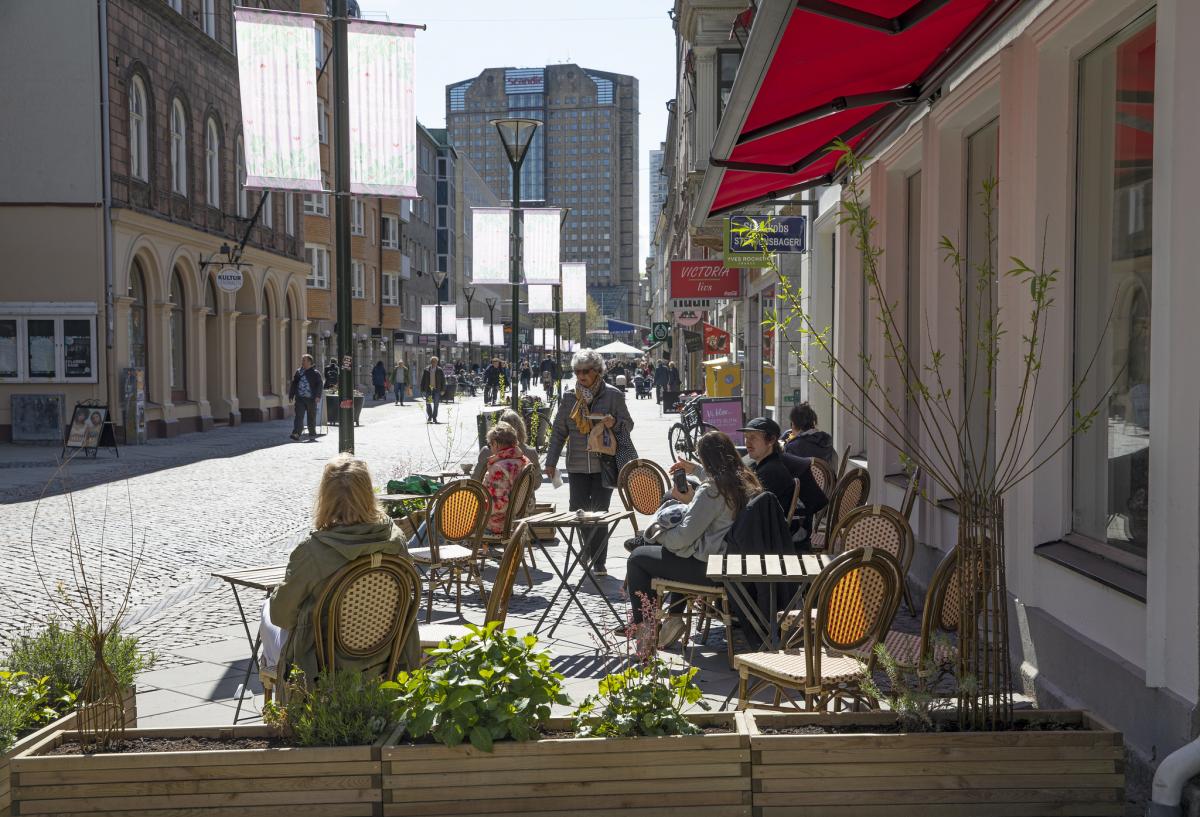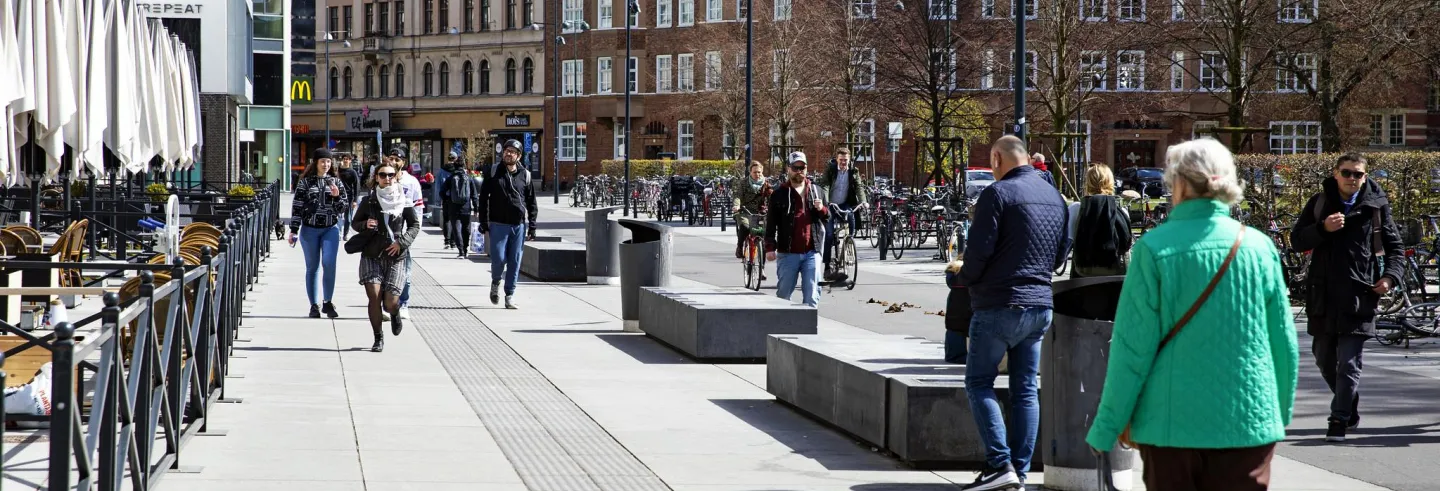I am close to 73 years old, live in retirement in Stockholm, have had two heart attacks (with seven stents inserted between 2002 and 2007), am a diabetic, and have had four surgical operations in other parts of the body. I am, therefore, by anyone’s standard, well within the risk group for infection by the coronavirus.
I am also a convinced supporter of the Swedish Social Democrats on most of their policy fronts—especially its macroeconomic policy from the early 1930s and the recent no lockdown strategy against the coronavirus. On both counts, Sweden ‘bucked’ the trend of most of its Nordic neighbours, as well as many—if not all—other nations.
Some Background Homilies
The 1969 film, Ådalen 31, by one of my favourite Swedish film directors, Bo Widerberg 1 He also produced Elvira Madigan, which ranks, with Death in Venice, as two of four or five great films, for me. , depicted the tragedy of the Ådalen massacre of the spring of 1931, when the military opened fire on a group of workers who were on a strike in sympathy with workers protestors in another factory nearby. This episode shocked and changed the behaviour of the Swedish people.
In his appearance and demeanour, Anders Tegnell, an epidemiologist at the Swedish Public Health Agency (SPHA), reminds me of the ‘folksy’ atmosphere given by Hans Holmér (Chief Police Officer in the Stockholm region), who led, in its initial period, the investigation into a tragic episode in Sweden’s recent history: the assassination 34 years ago of the Prime Minister of the nation, Olof Palme. That episode led to a trying time for Swedish society, and social behaviour was transformed after that tragic incident too.
The SPHA [Swedish Public Health Agency ] has harnessed the Swedish traditions of patience, conformity and taciturnity, to advocate an independent policy.
Over a period spanning almost 90 years, these three episodes—the massacre in Ådalen in 1931, the assassination of Prime Minister Olof Palme in 1986 and the tragedy of the coronavirus in 2020—have changed Swedish behaviour irreversibly.
The SPHA has harnessed the Swedish traditions of patience, conformity and taciturnity to advocate an independent policy. But it is not clear to me whether the SPHA has harnessed psychology, economics, political science, the decision sciences (i.e., operations research), artificial intelligence, immunology, chemistry, and meteorology (together with atmospheric physics) in modelling the spread of the coronavirus. They do have experts in all these subjects within their ranks, and they seem to be well aware that a purely economic or medical approach is inadequate.
The ruling coalition that is administering policy follows closely—perhaps with an inevitable lag—the recommendations by the SPHA, which are endorsed by all the political parties in parliament, with ‘minor’ variations mostly on timing but also on the distribution of the burdens. In this context, it is most useful to acquaint oneself with the interview given by Tagnell, to Nature last month.
My (extended) family and I follow the recommendations of the government, especially on social distancing. I shop, for example, in the very early mornings—say between 7 and 8 am—on weekdays. The grocery shops personnel are well-protected and there are signs (even in English!) on instructions that are to be followed by all customers. The drug shops, dispensing prescription medication, and the state monopoly liquor store (systembolaget) have a minimum age for customers, and protect their employees (and their customers) with appropriate glass and plastic shields. They also have an abundant supply of cream for the use of employees and customers, to apply to the hands, in lieu of water and soap.
On the other hand, to the surprise of many of my friends in other countries in the European Union (EU) and elsewhere, very few Swedes wear masks of any sort! None in my family do so. The buses and subways, which ply the capital Stockholm are sparsely used. But with very few adjustments in their timetables, they operate according to schedule. Hospitals and doctors, which I, for one, visit fairly regularly, are like public transport: sparsely visited for reasons other than infections. That this may pose difficulties for those with illnesses other than infectious diseases is, of course, known to the SPHA. That is why their declared policy tries to reduce the pressure on the health system.
It is useful to remember that (roughly) a third of the world’s population lives under conditions of various types of lockdowns; in addition, not every country is able to effectively monitor the breaking of the legally implemented lockdowns.
The Swedish ‘No Lockdown’ Strategy—the General Facts
“I think it has been overstated how unique the approach is.” - Anders Tegnell, in: Paterlini, 2020, p. 574; italics added.
There are some comparisons with other EU countries of the effect of the Swedish policy on the coronavirus, but most of the influential comparison are with other Nordic countries. Sweden acknowledges, quite explicitly—but I guess with some sadness—that deaths due to the coronavirus epidemic in the relatively large old-age population, particularly in care homes, have been higher than in other Nordic countries.
It may be useful to put the overall facts down of Sweden and its Nordic neighbours, before any comparison is made. As of 8 May, Sweden with a population of 10.23 million reported 25,921 cases of the coronavirus with 319 deaths per million of its population. In Norway (population 5.37 million), the total number of cases are 8,099 with 43 deaths per million population 2 All data on the number of coronavirus cases and fatalities are from https://www.worldometers.info/coronavirus/. These are synthesised from national and international agencies (See: https://www.worldometers.info/coronavirus/about/) . In Denmark (population 5.81 million), the total number of cases are 10,319 with 91 deaths per million population. Finland (population 5.52 million) has had a total of 5,880 cases with 52 deaths per million population. And in Iceland the smallest of the Nordic countries (population of 341,000), the number of cases is 1,801 and a fatality rate equivalent to 29 per million population.
Other fact-based data for the Nordic countries as a whole are constantly available, in social media and public broadcasting on the TV and radio, with special programmes on the different governments’ responses being highlighted.
The Swedish no lockdown strategy … was predominantly aimed at reducing the pressures on the society-wide healthcare system.
Comparisons with non-Nordic countries, especially to derive policy measures, are muted. This is mainly due to the non-uniformity of data collection activities and the non-homogeneous nature of the definitions used for coronavirus-induced deaths and the coronavirus infection rates.
The Swedish no lockdown strategy, informed by the so-called science-based advice of SPHA, with the very public figure of Anders Tegnell, was predominantly aimed at reducing the pressures on the society-wide healthcare system (Paterlini, 2020, p. 5740).
I personally believe that the no lockdown policy of Sweden, based also on the traditions of the people and the society they formed, would have had a greater chance of success before the recent wave of immigration—say in the last 50 or 60 years. By asserting this rather controversial statement I do not, for a moment, advocate an anti-immigration policy. It is just that many ethnic groups who have immigrated to a largely taciturn Sweden, seem to congregate amongst like-minded people. This may undermine the no lockdown policy of Sweden, based as it is, on an older tradition of Swedish individual reservation.
I am aware that this is hypothetical counter-factual statement and requires much more detailed analysis of data than is current practice. But one way is to investigate the incidence in different types—the ‘old-fashioned’ word would be ‘class’—of populations, for example, in old people in care homes, immigrant families, youth, age-groups, gender, etc. Immigrant families could be further broken down to types—say Greeks, Latin American, or Middle Eastern—and when they immigrated to Sweden, confining the statistical investigations to, post-1956, and till 2016 3 I have deliberately chosen the initial point as 1956 because of the Hungarian uprisings; the end point could be around 2016, when many Middle Eastern and North African immigrant waves took place. , or till the data is available.
Anders Tegnell, in the cited Nature Q&A, does give a rationale for the Swedish approach:
As a society, we are more into nudging 4 It is not clear that immigrants, particularly of very recent vintage, are susceptible to these behavioural economic concepts. I myself, not a very recent immigrant, was hostile to the concept of nudging – until I was able to link it with Herbert Simon’s work on bounded rationality and satisficing. : continuously reminding people to use measures, improving measures where we see day by day the that they need to be adjusted. We do not need to close down everything completely because it would be counterproductive.
This is a 'learning by doing' approach and there is an excellent tradition in economic theory, partly inspired by Erik Lundberg’s 1958-59 Marshall Lectures at Cambridge, when he invoked the calculable productivity improvements, even without net investment for a number of years, in the Horndal steel works in Fagersta, Sweden. 5 Previous approaches in aircraft wing manufacturing and, also, dissenting views, do exist in the economic and history of economics and technology literature.
The Swedish no lockdown policy is well-informed and based on a good understanding of accepted science. It is just that what is ‘accepted science’ is debatable, as indeed, 22 distinguished scholars wrote to the Swedish national, liberal, newspaper, Dagens Nyheter, on April 14. It is equally interesting to note the ‘official’ reaction of the SPHA 6 I have found Gina Gustavsson (2020) particularly useful on this matter – especially her critical views of the reactions of SPHA and of the ultra-nationalist, right-wing, political party, the Sverige Democraterna. .
Economic Policy and Sweden’s Approach to the Coronavirus
“Continuous time …. models are in any case trivial mathematical exercises. The iterated map …. is the only method that sheds light on infection growth.” - McCauley, 2020, p.10; italics added.
Sweden chose a social-democratic-inspired economic policy after the social democratic party won the general elections in the early 1930s. The consistency of the applied policy, based on the teachings and literature of the Swedish masters with modifications by the contemporary sympathisers of an active counter-cyclical policy, was broadly accepted by the-then Swedish population.
Sweden’s no lockdown policy is partly also to shield the economic infrastructure of the country from the effects of the coronavirus epidemic.
This, pari passu, is what is recommended by the SPHA and adopted by the government. Whether the SPHA, consciously or unconsciously, is informed by the history of economic policy in Sweden at least since the Great Depression, is a moot question.
Sweden’s no lockdown policy is partly also to shield the economic infrastructure of the country from the effects of the coronavirus epidemic. There have been, with broad agreement of all political parties in parliament, at least seven consecutive stimulus packages. Once again, there are—on the left and the right (including the ultra-nationalists and the religious supporters)—differences of opinion about the timing and even the magnitude of the response. The incidence on the strictly economic base of the society is emphasised more by the right-wingers, whereas the left-leaning groups, and even the religious party, are more concerned with helping the economic needs of the old and under-privileged of society.

Flattening one (or a few) curves of the spread of the virus over time is like believing in the arrival of spring by the dance and singing of a single (or a handful of) sparrows. I don’t know and am not privy to the economic models that are augmented by the health sectors. I expect that they are so integrated. Unless they are explicitly finite-time maps, rather than the usual infinite-time, continuous, model exercises, they cannot answer the questions the SPHA and the government ask, needing useful answers—quickly.
Meanwhile, it is possible that one of the SPHA strategies, that of herd immunity, may prove successful, till a working vaccine against this dreadful virus is developed. It is both necessary and sufficient that this strategy is based on some scientific modelling exercise, and not on free-wheeling, free-market, ideological beliefs—even though economic modelling with health sector factors calls for intuition and ingenuity, tempered by experience. It is another expression for ‘learning by doing’.
Much of Swedish economic policy, driven by its idiosyncratic no lockdown strategy, is along the lines advocated by Chandrasekhar (2020), but I surmise that the SPHA, like the theories of the economic policy developed by the pioneers and applied in Sweden in the 1930s, has no place—or, if it does, only pro tempore—for exogenous factors.
Concluding Notes
“One .. problem involves the careless use of the ‘Necessary and Sufficient’ (N&S) conditions used as a technical expression in formal logic, which is a field of study dealing with abstract reasoning.” — Yoshihara and Yoshihara 2018, 53; italics added.
Complexity—however defined (but, algorithmically, in general), uncertainty (not simply risk), finite time, and the fallacy of composition dictate the nature of an effective response mechanism. The effective response is determined also by the kind of models used to evaluate performance— that is, whether they are continuous-time or maps of a discrete nature; and none of this is defined by ‘a technical expression in formal logic,’ especially when health-sector factors are important.
As Holmes, et.al., (2018, 180) wrote:
Trust is undermined when scientists make overblown promises about disease prevention.
‘Overblown promises’, an endemic disease (sic!) of pure economics, lies in ignoring in modelling exercises the ubiquity of (algorithmic) complexity, uncertainty, finite time, and the fallacy of composition. This is abundantly clear in the role assigned to climate effects in economic models—especially in growth economic, steady-state, equilibrium models. Much of this is reflected in the award of the Riksbankens (Nobel Memorial) Prize in economics—but, of course, with exceptions.
I am convinced that the SPHA’s advice is based on a healthy dose of scepticism of the economist’s approach to modelling exercises—like their Swedish counterparts of the 1930s, who devised an anti-depression policy but based on the welfare of the nation.
The models the Swedish economists of the inter-war period developed were maps and they referred to uncertainty as ‘anticipations’, and they never failed to consider the complexity of systems subject to the fallacy of composition. That the models they used referred to algorithmic complexity of maps was made clear long after the event. In addition, the models were abstract but the reasoning was not.
A recent headline, in many of the newspapers of nations practicing lockdowns of one sort or another, was: “WHO lauds lockdown-ignoring Sweden as a ‘model’ for countries going forward.” Both Anders Tegnell and the Swedish prime minister, Stefan Löfven, responded to the statement by Dr. Mike Ryan, the emergencies expert at WHO, which led to the above headline; the former in public and the latter with a private letter. They were both grateful for the recognition granted them, via the extolling of the no lockdown policy.
I find it refreshing to see and know that Sweden is again bucking the trend.
This is a tentative attempt to understand the Swedish no lockdown policy as the effects of the dreadful virus are changing all the time. I have tried to model the Swedish strategy as a battle between Hercules (policy) and Hydra (the virus) of ancient Greek mythology, recast in terms of nonlinear dynamical systems subject to (recursion theoretic) incompleteness.
A draft version of this article benefitted from friendly criticism by Stefano Zambelli, Charlotte Bruun, Francesco Luna, Ragupathy Venkatachalam, and the editor of The India Forum. Alas, none of them are responsible for this final version.
(Editor's note: An earlier published version had wrong figures for deaths per million population for all the Nordic countries other than Sweden. The correct figures have now been inserted. The error is regretted.)










